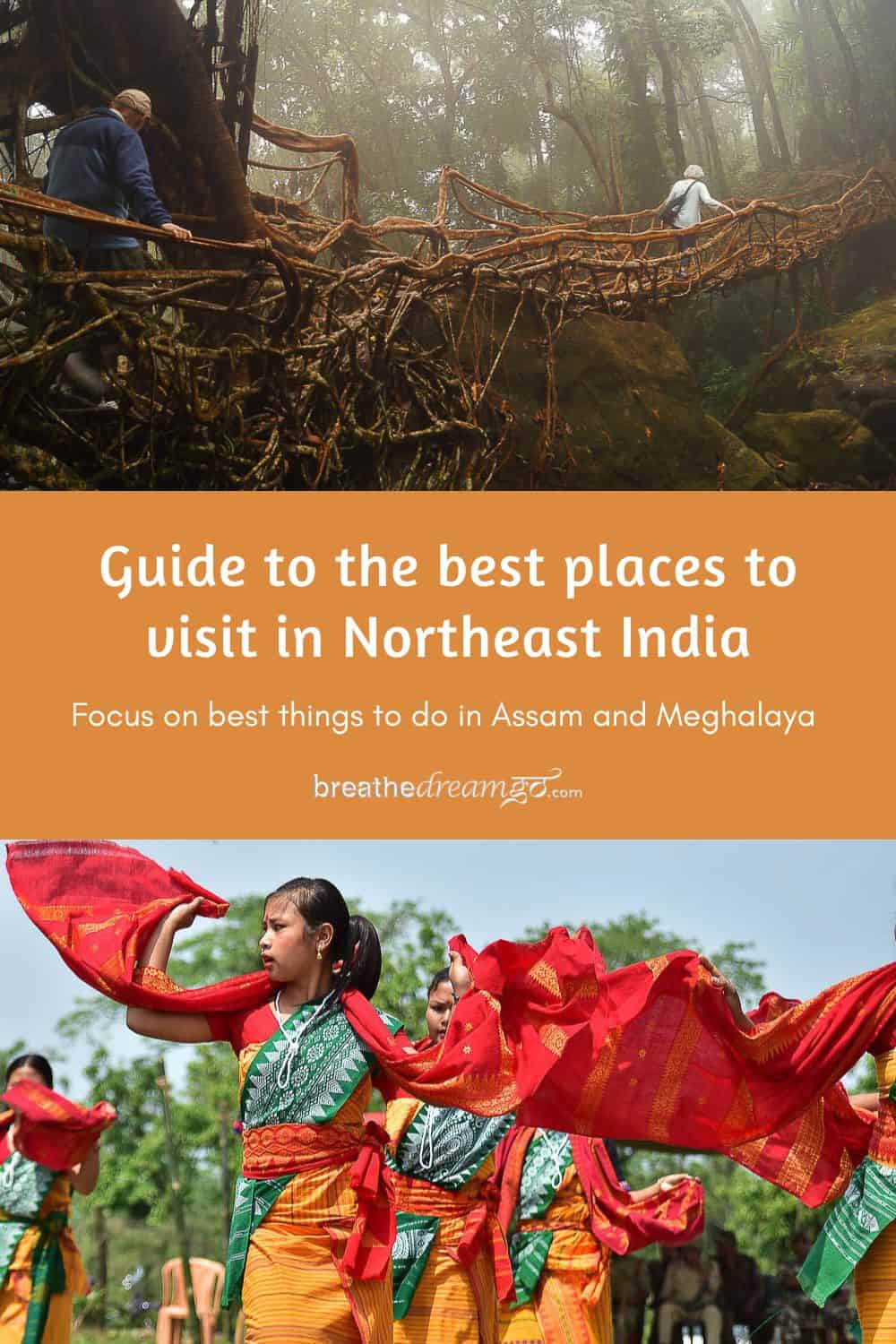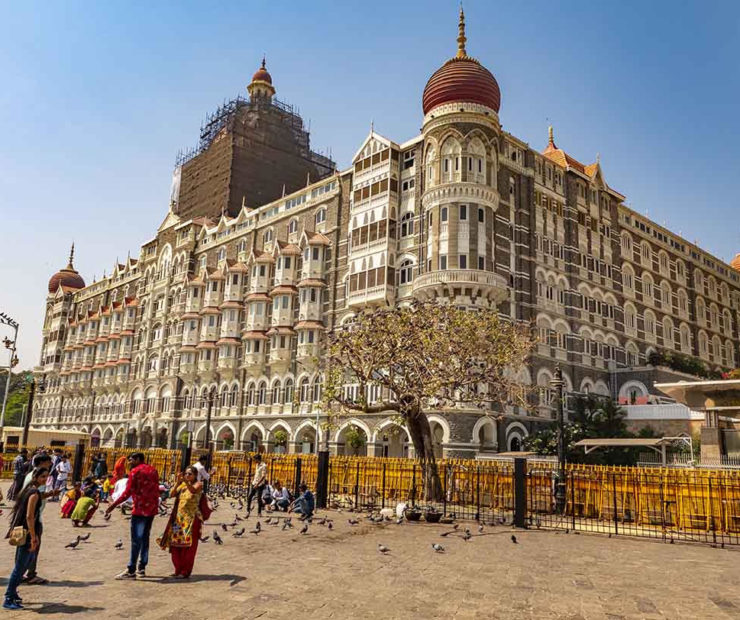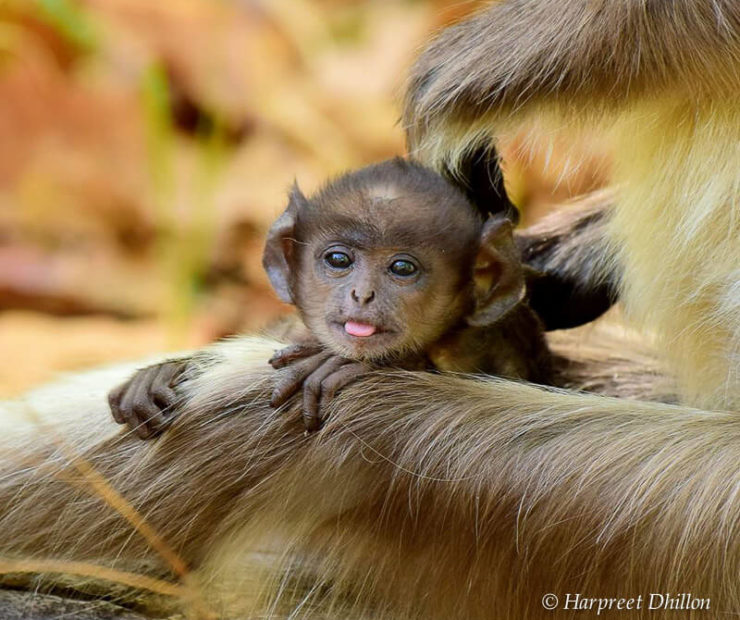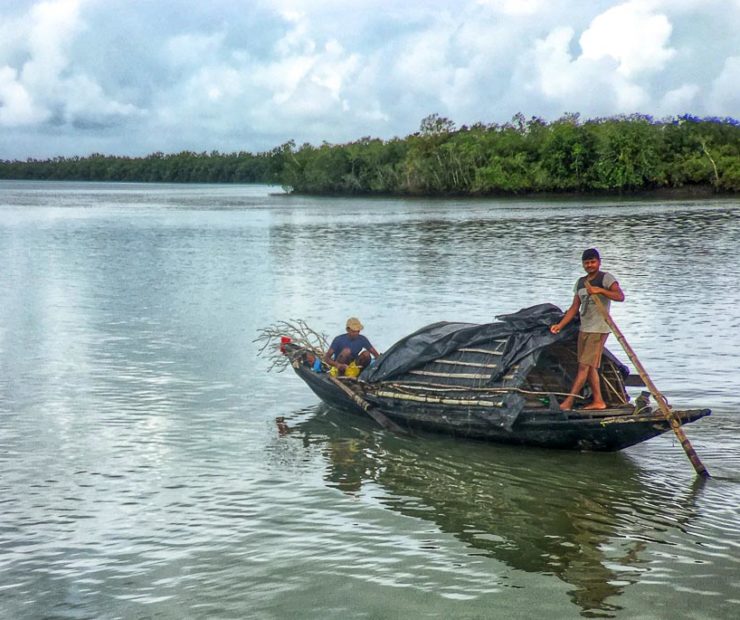Table of Contents
Best places to visit in Northeast India: Assam and Meghalaya
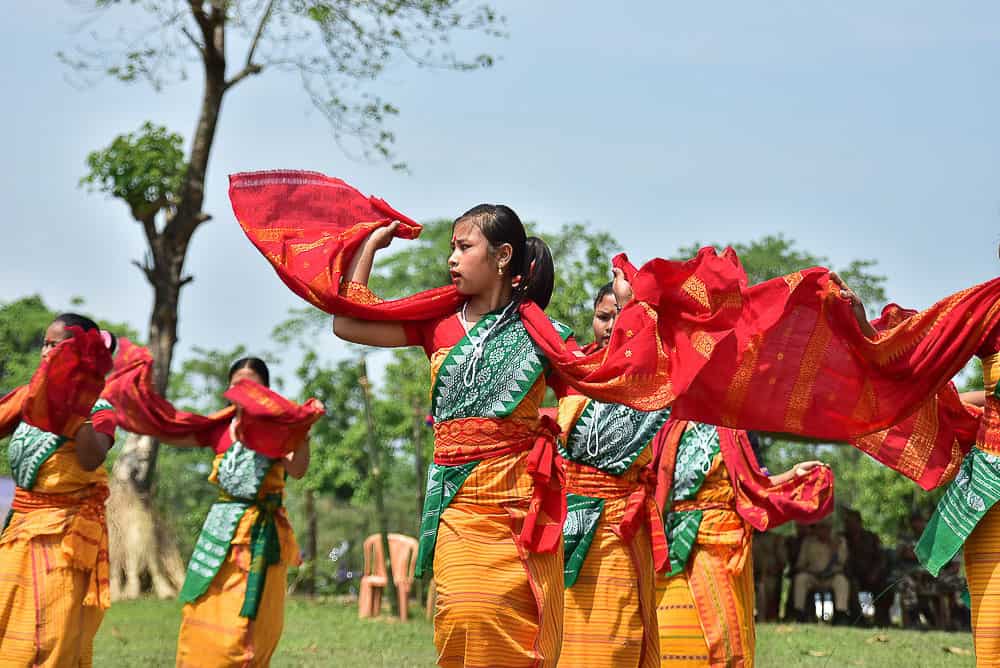
Northeast India is a unique combination of vibrant tribes, carefully preserved cultures, herb-infused cuisine, thriving wildlife, pristine natural environments, stunning landscapes, and woven fabrics and textiles. The best places to visit in Northeast India include the Seven Sisters – seven states that make up the most of the Northeast: Manipur, Mizoram, Assam, Arunachal Pradesh, Meghalaya, Nagaland, and Tripura. The remaining state is Sikkim. In this post, we are going to focus on things to do and places to visit in the Northeast states of Assam and Meghalaya, a prime adventure travel destination in India.
This guest post was written by Northeast expert Gaurav Bhatnagar, who will be leading a small group tour to Assam and Meghalaya in Northeast India for India for Beginners: Northeast India Adventure, February 11 – 24, 2024.
Gaurav can also create a custom tour for anyone who wants to visit this amazing and largely untouched and unseen area of India. Please contact us at India for Beginners.
In this post, written for foreign visitors to Northeast India, Gaurav will answer these questions:
- What are the best places to visit in Northeast India?
- Where are Assam and Meghalaya located?
- When is the best time to visit North East India?
- What are the best things to do in Northeast India?
- Wildlife tourism in Assam
- Visiting the vibrant tribes of Northeast India
- Trying the unique cuisine of Assam and Meghalaya
- What is the best way to explore Northeast India?
- Is Northeast India safe for female travellers?
What are the best places to visit in Northeast India?
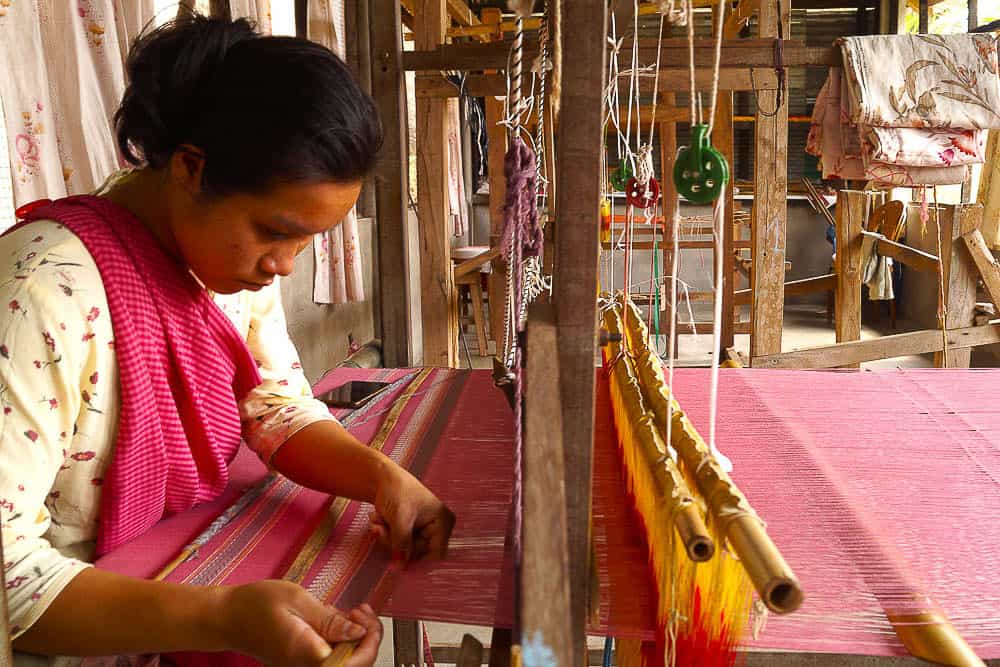
Where are Assam and Meghalaya located?
Northeast India comprises seven states, known as the Seven Sisters, and shares borders with Myanmar, Bhutan, Bangladesh, and China. While Assam is the biggest of the sisters, Meghalaya is smaller.
Both Assam and Meghalaya are rich with tribal culture. Visiting Assam and Meghalaya, in my experience, is like opening a box of goodies on Christmas morning. The only difference is that this box does not have one but an assortment of goodies that will charm even those who are veteran travelers to India.
Women travellers especially will be excited to learn about the matrilineal societies of Assam and Meghalaya, wherein the family lineage is maintained through the female side.
When is the best time to visit Northeast India?
While you can visit Assam and Meghalaya throughout the year, depending on your areas of interest, the best times are between October and March. This is when the national parks of Assam are open for all and the monsoon season still has not started in Meghalaya.
The weather is cold in the morning but warms up nicely during the day, and the nights are pleasant for a walk around your lodge in Kaziranga National Park or in the vibrant city of Shillong. The average temperature in Kaziranga National Park ranges between 15 °C and 20 °C and is a bit lower in the hills of Meghalaya.
What are the best things to do in Northeast India?
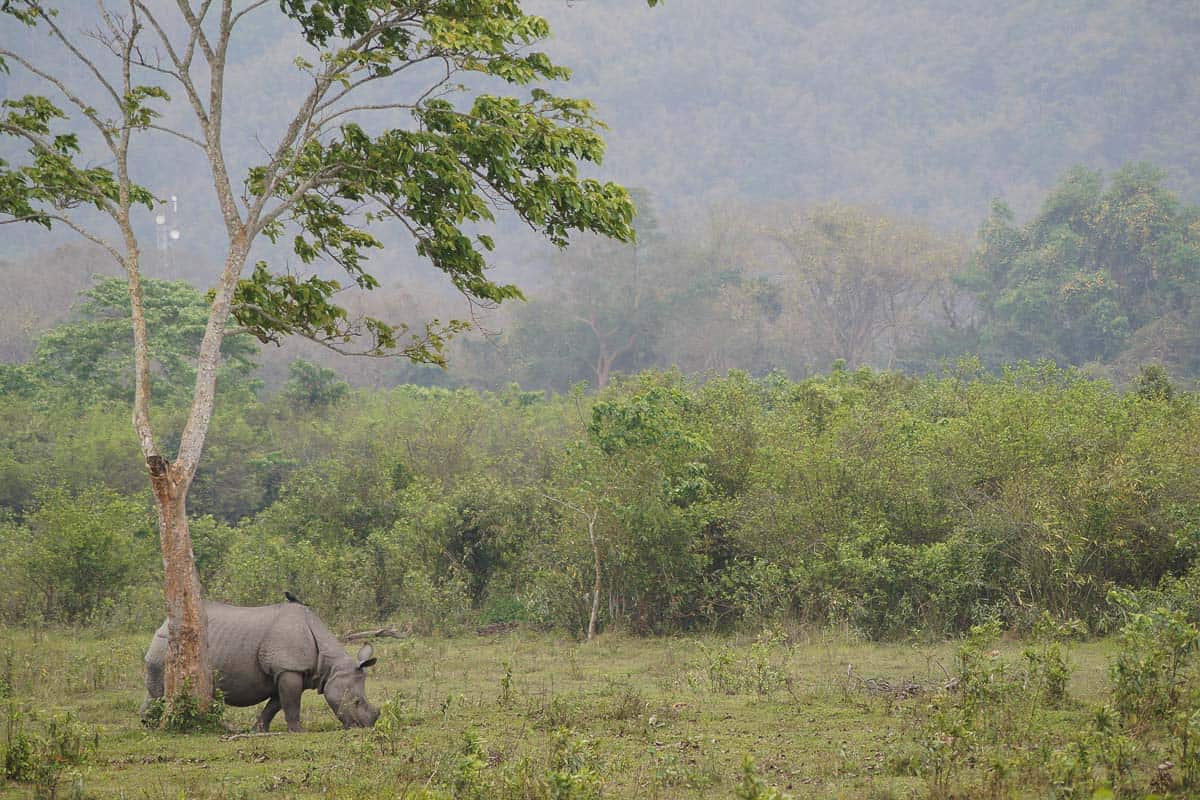
Wildlife tourism in Assam
Assam is known for their fierce protection of wildlife.
Kaziranga National Park is home to the Indian one-horned rhino, Asiatic elephant, water buffalo, and Bengal tiger. In the late 80s, the rhino had descended to the status of endangered species, primarily because of extensive poaching. However, due to the conservation efforts of the government, working with the local communities, the population of rhinos has gone up from a low of 200 (about 20 or 30 years ago) to more than 3,000 at present.
Some of the reasons for the dwindling rhino population were hunting, poaching for the horn, human-rhino conflict, and habitat loss. However, today Kaziranga National Park is a proud example of landscape restoration and rhino population revival. The year 2022 was a remarkable year of zero poaching, the first since 1977.
NOTE: Click here for how to prepare for a wildlife safari in India.
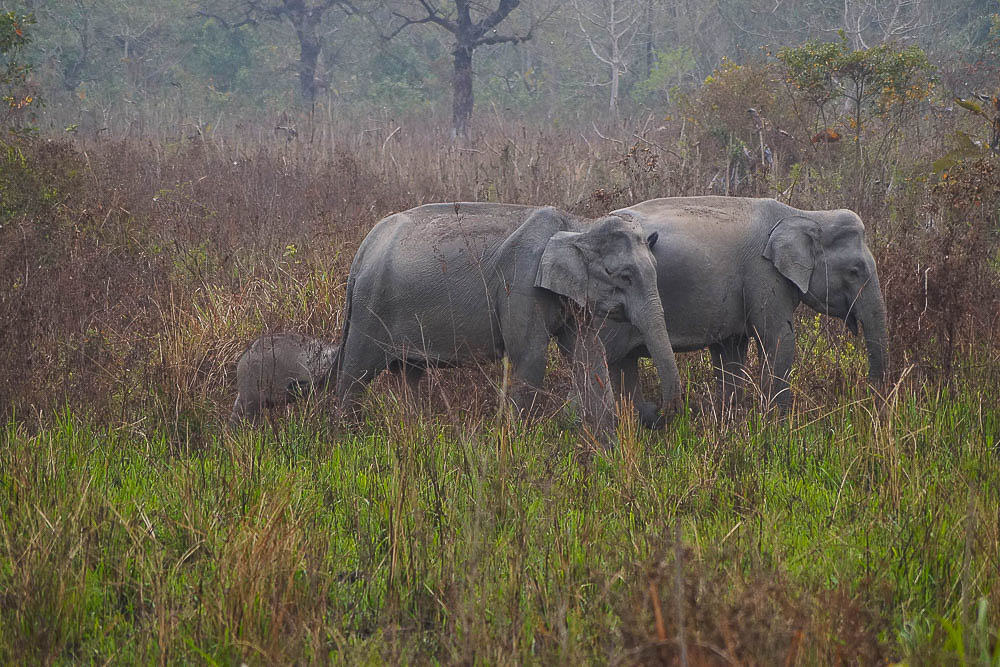
Community-based initiatives such as elrhino paper takes the conservation efforts a notch up by using rhino and elephant dung to manufacture chemical-free paper. By visiting the national park as a tourist, you support the tourism economy that offers an alternative source of income to former poachers – turning them into conservationists.
Visiting the vibrant tribes of Northeast India
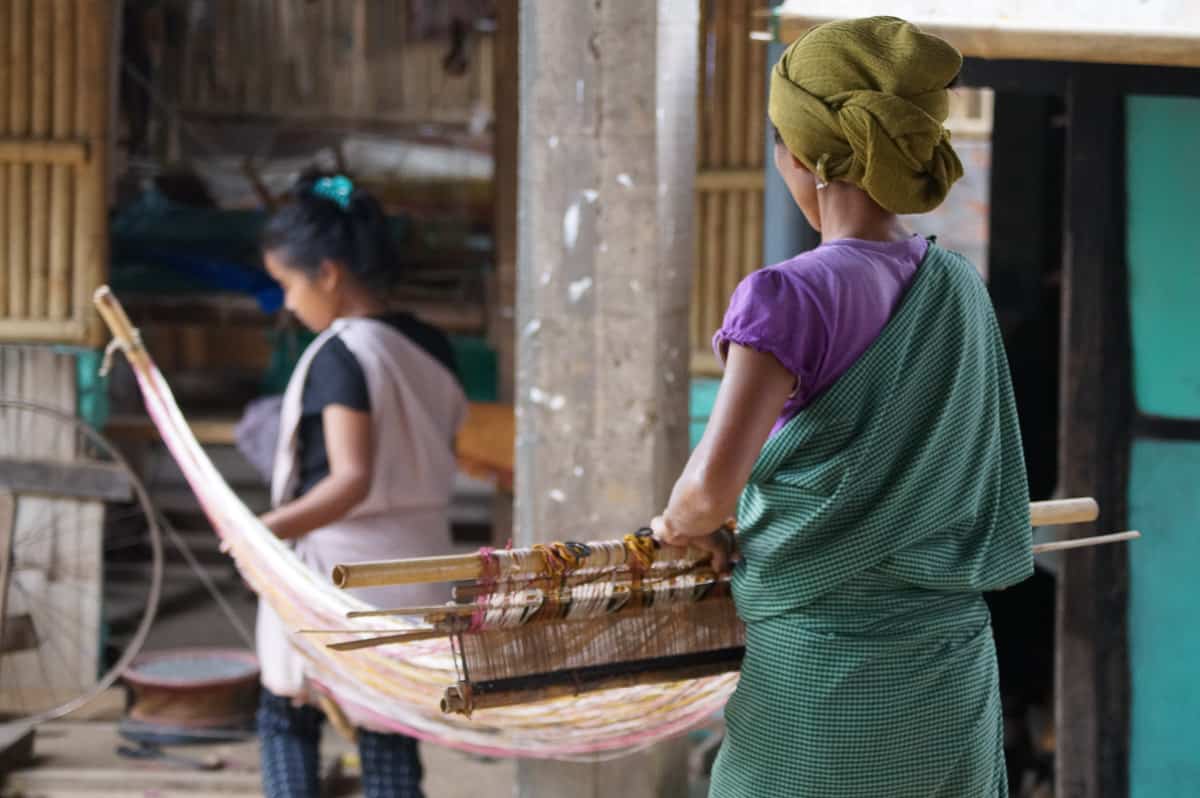
Assam and Meghalaya are home to several tribes and sub-tribes. I have had the opportunity to spend time with the Bodo and Karbi of Assam and the Khasi of Meghalaya.
If you are a textile enthusiast, you can identify a person’s tribal ancestry through the woven patterns on their clothes. I find this fascinating because in Rajasthan you can identify a man’s caste through the colour and design of his turban. Such are the differences, yet similarities, within India.
Because they are matrilineal societies, the Khasi tribes of Meghalaya pass their mother’s surname to the children, and the eldest daughter inherits the parents property. However, the daughter also has the responsibility to take care of the parents. The other two smaller tribes of Meghalaya, Garo and Jaintia, follow similar societal structures.
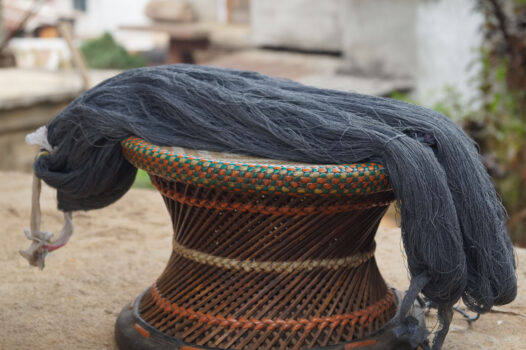
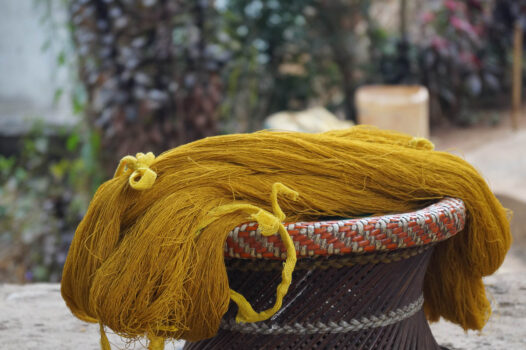
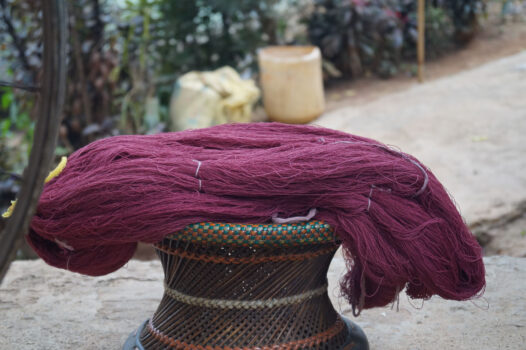
Northeast India is primarily rural and most families have a loom at their home. Children grow up seeing their parents make their clothes on the loom and sell them through local cooperatives, and the skill comes naturally to them. While many people have started using mill-produced yarn and synthetic colors, the Khasi people of Meghalaya continue to source colours from natural pigments and weave from homemade yarns. Among the Khasi people, a typical male dress is called a jymphong and a female dress is called a jainsem.
Something you should not miss in Meghalaya is seeing local women go through the entire process of extracting the silk, spinning, dyeing, boiling, and weaving on a handloom, floor loom, or backstrap loom. You can walk from one home to the other and see locals weaving while you sip a cup of black tea and chat with them. Or, you can try your hand at it, as well.
Trying the unique cuisine of Assam and Meghalaya
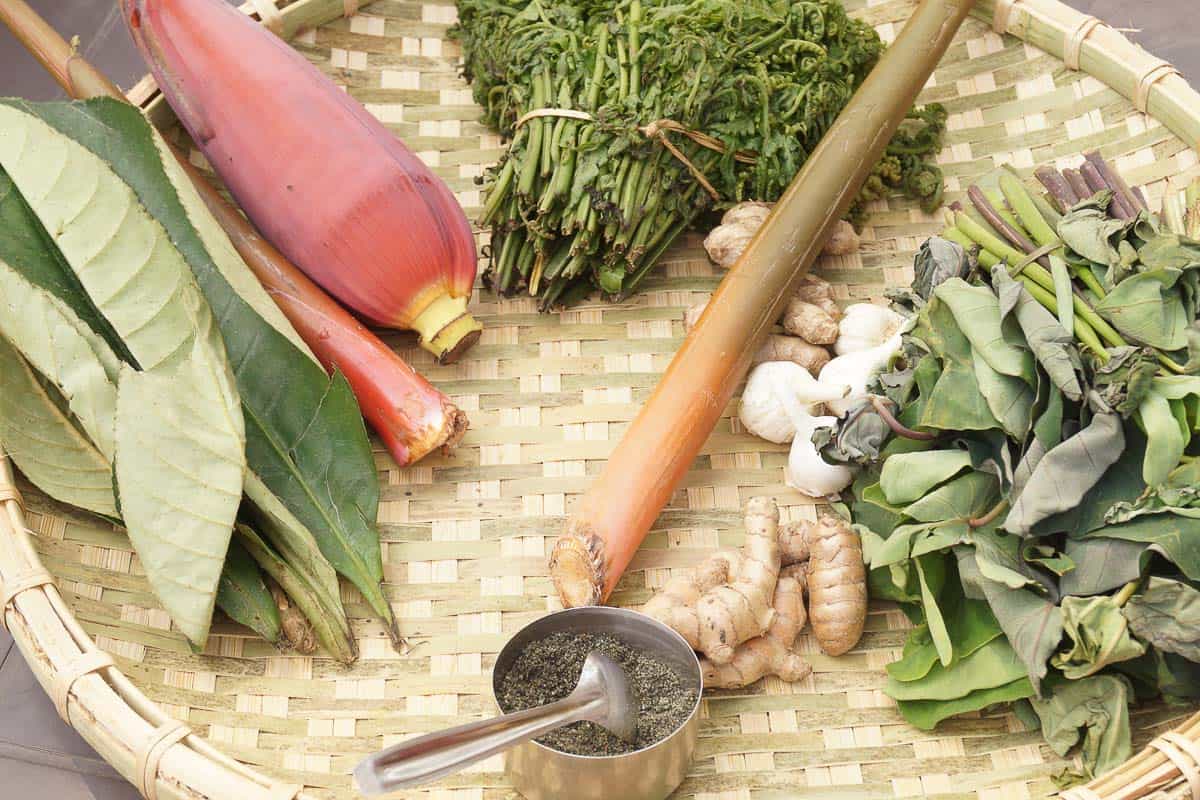
If you have been to India or have read about its cuisine, you know how important the role of spices is. However, the tribal food of Northeast India is different: it fully relies on infusing flavours through herbs and salt.
A platter of food would normally consist of rice and lentils with meat (chicken, fish, or pork), and a range of condiments (or chutneys) made with herbs, bamboo shoots, and other local produce. Some of the common locally grown Karbi herbs are the lopong leaves, tihaso (a type of turmeric), and jirlang (local species of garlic). As you dig into the plate, you can make every bit taste unique with a different sauce.
Menpo (sesame seeds) are grown in abundance and play a major role in both non-veg gravy and condiments (especially with boiled bamboo shoots or raw banana pods). The meat, if served at a home or a traditional restaurant, is always free range. By integrating tribal cuisine into tourism, the locals stay connected with the forests, which have always been an integral part of their lives.
I highly recommend tasting bamboo chicken where the chicken pieces are cooked inside freshly sourced bamboo tubes from the forest. It has a subtle hint of sesame seeds cooked in the natural fat of chicken or pork and served with red rice. Or try the sticky rice cakes steam-cooked inside leaves with black tea for breakfast. Be assured that everything will be easy on the taste buds and digestion.
Assam is also known for tea. In fact, the tea industry in India began in Assam, several centuries ago. Assam tea is a strong tea with a rich, malty flavour, and is often used in breakfast blends such as English Breakfast Tea. Assam tea is quite different from Darjeeling tea, grown in nearby West Bengal, which is known to be much lighter.
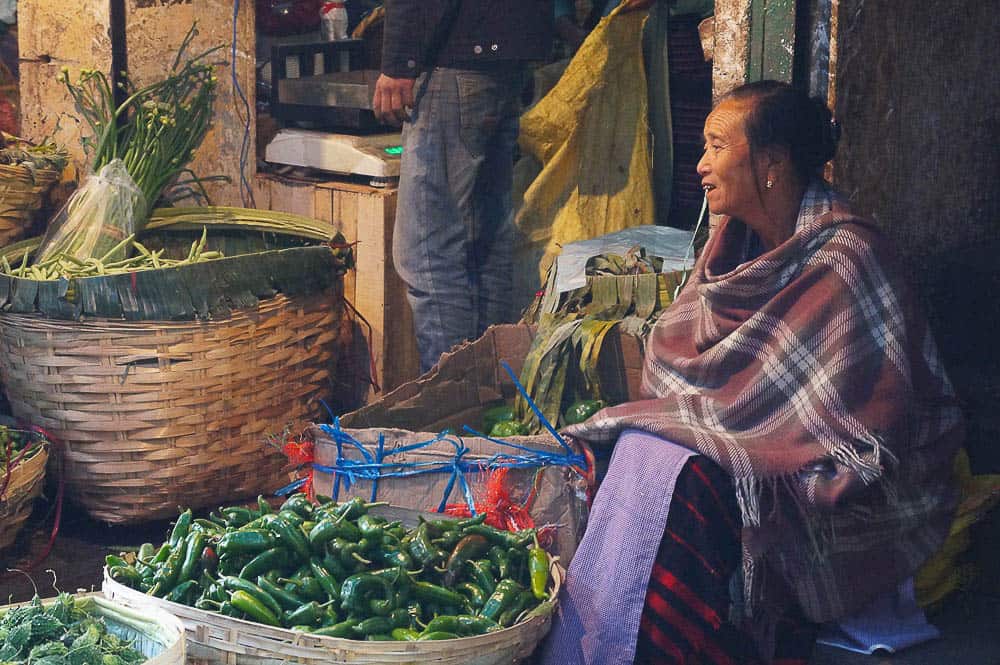
What is the best way to explore Northeast India?
Visiting Assam and Meghalaya is the perfect way to start your explorations in Northeast India. They are two of the best places to visit in Northeast India.
Plan for at least two weeks and include wildlife, homestays, tribes, local cuisine, and textiles in your itinerary. Keep in mind that travel distances can be deceiving (often taking much longer than you might imagine) and transportation options can be scarce. If you are a solo female traveller, I recommend joining a group of other like-minded travellers.
Do not miss visiting at least one farmers’ market such as the Iewduh (Bara Bazaar) in Shillong and ensure that you experience a homestay or a traditional stay while you are in the Northeast.
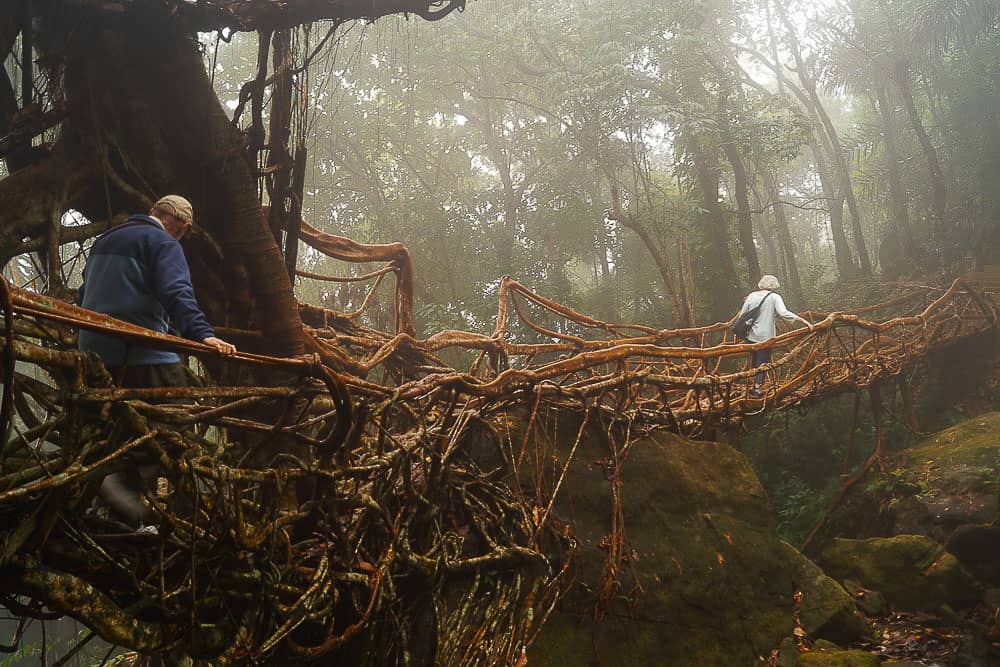
And of course you cannot miss the living root bridges of Meghalaya. Living root bridges are made of intertwined roots, built over centuries by the indigenous tribal people of Meghalaya, the Khasis and the Jaintias. Living root bridges take 20 – 30 years to build. With care, the bridges – which can be 100 feet in the air and reach 175 feet in length – can last hundreds of years. Some of the most popular living root bridges are in Nongriat, Cherrapunji, Nongbareh, and other nearby locations.
Meghalaya also has another natural distinction: it is home to the two wettest places on earth! The town of Mawsynram in Meghalaya’s Khasi Hills is the wettest place on earth, with an annual rainfall of approximately 11,872 millimetres (467.4 inches). Most of Mawsynram’s rain falls during the monsoon season, which lasts from April to October. The second wettest place on earth is Cherrapunji, with an annual rainfall of 11,777 millimetres. Cherrapunji is just 15 kilometres from Mawsynram.
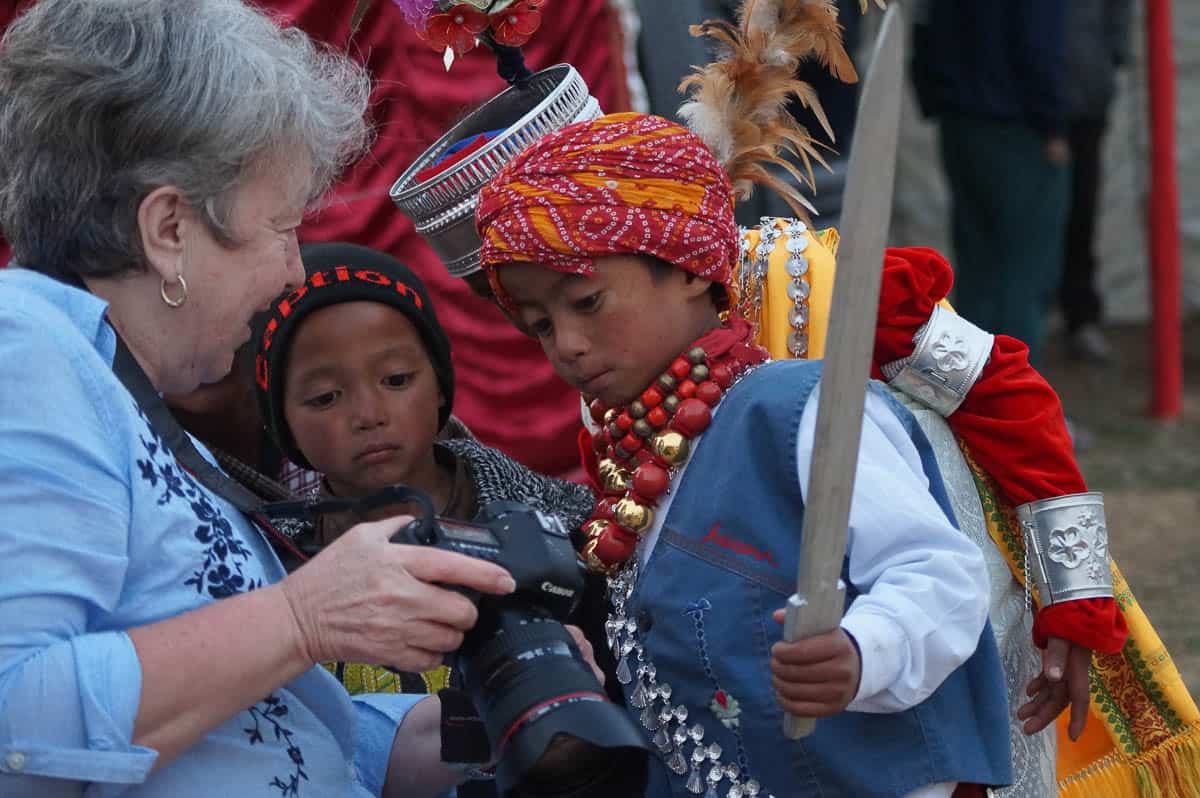
Is Northeast India safe for female travellers?
I have found the Northeast to be safe as the people are warm and friendly. A smiling face and a helping hand are never far away if you need them. Women play an active role in the economy and the society in the Northeast, you can see them in the farmers’ markets and shops, and their public presence tends to make women travellers feel more comfortable.
The city of Shillong has a café culture and it is common for both men and women to enjoy the vibrant nightlife.
Overall, I think women travellers would feel safe and comfortable in the Northeast.
NOTE: Click here more tips for women travellers on staying safe in India.
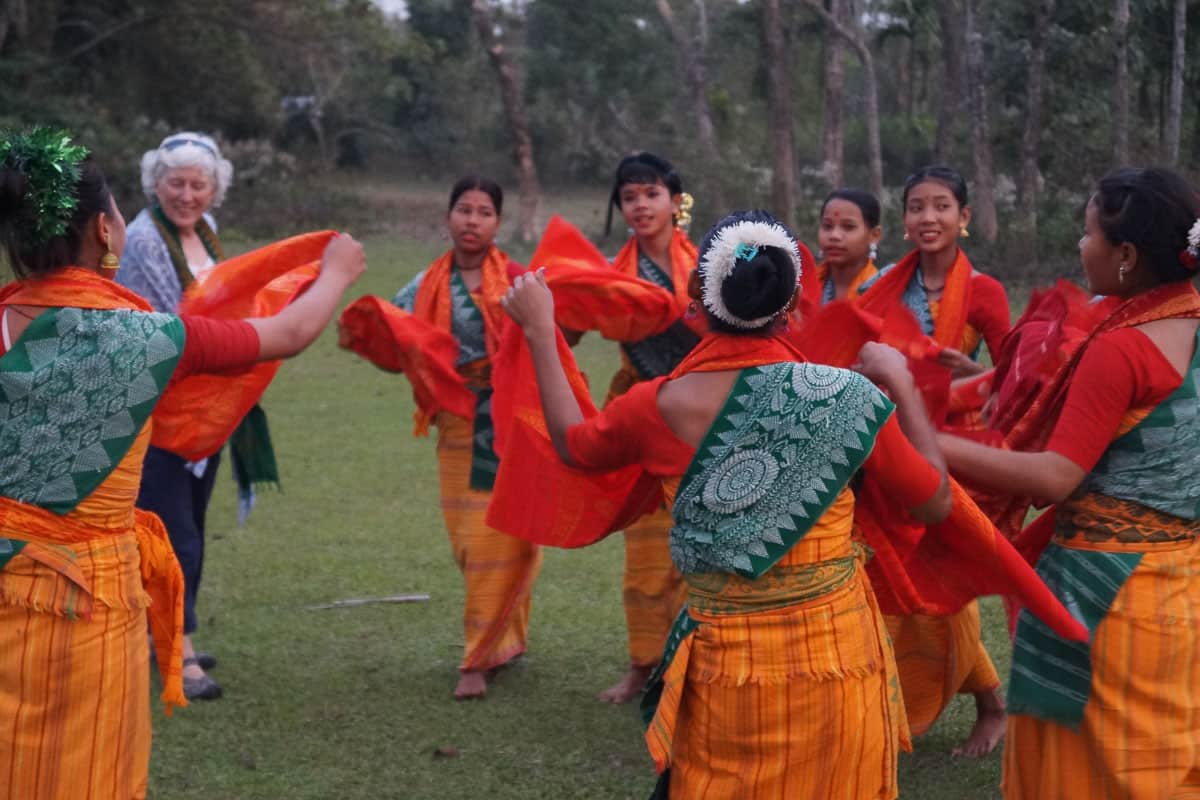
If you enjoyed this post, you can.
Sign up for Dispatches in the sidebar and follow Breathedreamgo on all social media platforms including Instagram, Facebook, Pinterest, and Twitter. Thank you!


